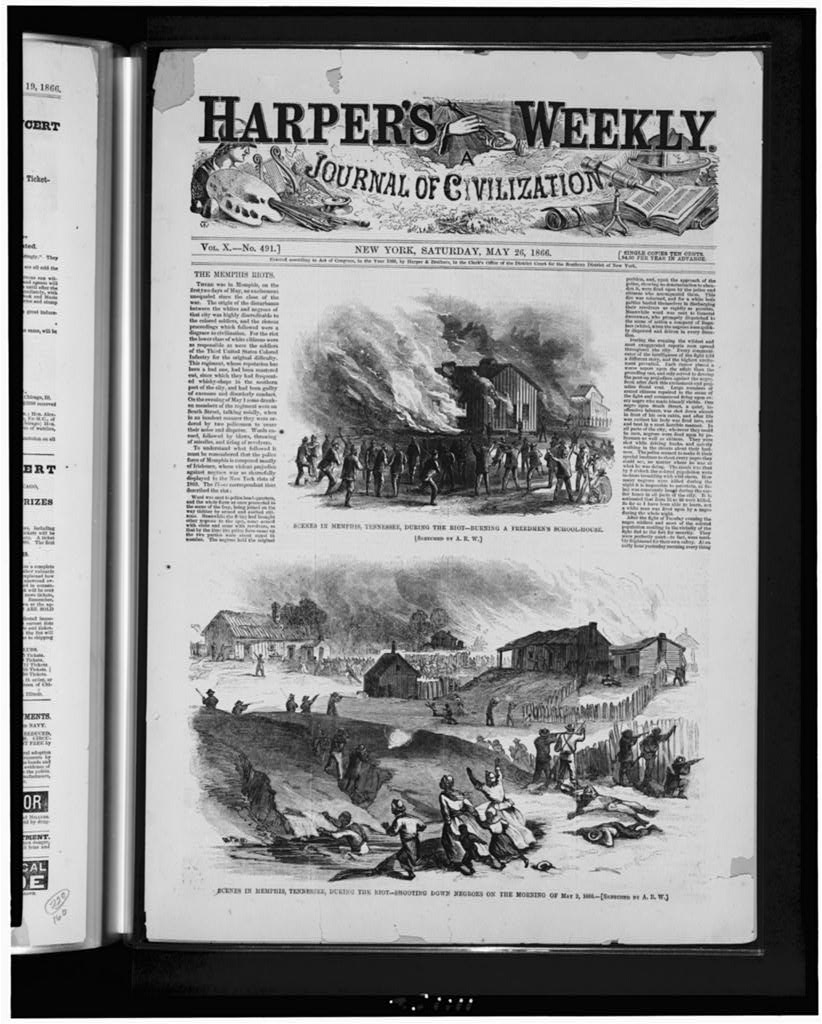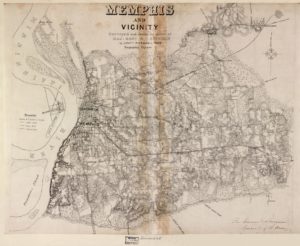According to The Freedmen’s Bureau Report on the Memphis Race Riots of 1866 the immediate cause of the Memphis riots of 1866 was an altercation between white policemen and blacks on the evening of April 30, 1866. The following afternoon policemen tried to arrest some boisterous and intoxicated recently discharged black soldiers. Another fight broke out and the violence escalated. Here’s a summary from the report:
The remote cause was the feeling of bitterness which as always existed between the two classes. The minor affrays which occurred daily, especially between the police and colored persons.
The general tone of certain city papers which in articles that have appeared almost daily, have councilled the low whites to open hostilities with the blacks.
The immediate cause was the collision heretofore spoken of between a few policemen and Negroes on the evening of the 30th of April in which both parties may be equally culpable, followed on the evening of the 1st May by another collision of a more serious nature and subsequently by an indiscriminate attack upon inoffensive colored men and women.
Three Negro churches were burned, also eight (8) school houses, five (5) of which belonged to the United States Government, and about fifty (50) private dwellings, owned, occupied or inhabited by freedmen as homes, and in which they had all their personal property, scanty though it be, yet valuable to them and in many instances containing the hard earnings of months of labor.
Large sums of money were taken by police and others, the amounts varying five (5) to five hundred (500) dollars, the latter being quite frequent owing to the fact that many of the colored men had just been paid off and discharged from the Army.
No dwellings occupied by white men exclusively were destroyed and we have no evidence of any white men having been robbed.
From the present disturbed condition of the freedmen in the districts where the riot occurred it is impossible to determine the exact number of Negroes killed and wounded. The number already ascertained as killed is about (30) thirty; and the number wounded about fifty (50). Two white men were killed, viz., Stephens, a policemen and Dunn of the Fire Department. …
According to blackpast.org General George Stoneman declared martial law on the third day of the riots in an attempt to restore order.


